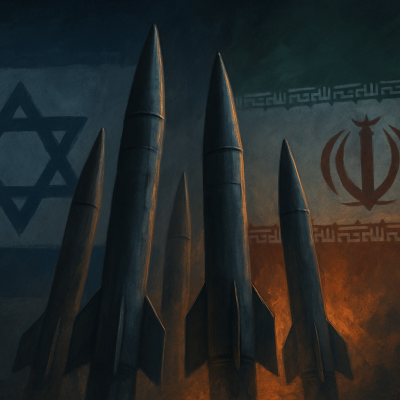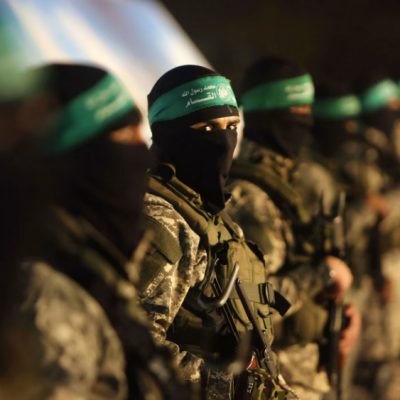As 2023 draws to a close, a compilation of pressing issues emerges, collectively underscoring the overarching theme of addressing global challenges in a world that is in a constant state of transformation. When confronted with intricate challenges, there is no need to nurture a sense of imminent peril; instead, the call to action is clear—swift and resolute steps must be taken, driven by the recognition that the potential rewards and opportunities are too significant to be disregarded.
Navigating U.S.-China Relations in 2023
The U.S.-China relationship has witnessed several key developments in 2023, ranging from the early-year China spy balloon incident to the recent meeting between President Biden and President Xi on November 15, 2023.
In 2023, the focus on Taiwan’s strategic position intensified, examining its defense capabilities against a potential invasion by China, and paralleling the situation to Russia’s invasion of Ukraine. Studies and analysis also centred on how China and the United States play pivotal roles in shaping the geopolitical dynamics of the Indo-Pacific region, where their strategic competition, economic influence, and alliances with regional partners have far-reaching implications for regional stability and global politics.
Other topics of interest include Taiwan’s defensive strengths and weaknesses; the wider repercussions of the United States’ policies on Taiwan for regional allies like Japan, South Korea, and the Philippines; the imprisonment of Tibetans by the Communist Party of China; the evolution of China’s psychological warfare capabilities; and the implications of neomedievalism, which refers to a global landscape where traditional state-centric power dynamics are reshaped by a diverse array of international, sub-national, and non-state actors, creating a complex network of overlapping influences and interests, in the U.S.-China rivalry, and strategies to counter the diminishing military power and influence of the U.S. and its allies.
Russia’s War in Ukraine
Over the past two years, the conflict in Ukraine has continued to generate global attention, and it seems that there is no obvious resolution in sight.
An extensive amount of research and analysis has been conducted to understand this conflict from a variety of perspectives over the past year. A variety of factors have been examined, including the resilience of Ukrainian civilians, the logistics challenges faced by Russia, and the dynamics of the information war between the parties involved. Additionally, there has been a significant focus on escalation implications and risks, notably the alarming possibility of Russia resorting to nuclear weapons.
Western perceptions remain that with sustained support from its allies, Ukraine has the potential to emerge victorious in this conflict. Still, the conflict in Ukraine seems to extend to 2024.
Israel and Hamas Conflict
In the aftermath of Hamas’ devastating attack on Israel on October 7 and Israel’s subsequent forceful retaliation in Gaza, the Middle East has continued to be a deeply distressing and complex region.
Examining Israel’s past actions in Gaza, it is evident that Israel’s enduring strategy toward Gaza has failed to meet its expectations. The challenge lies in developing a more effective approach to the conflict; one that recognizes both the potential and limitations of current military actions. By understanding these factors, a more precise and effective response to the conflict in Gaza could be formulated. Simultaneously, studying the civilian harm during U.S.-led operations against ISIS would reveal essential lessons. These insights highlight the vital importance of upholding the moral obligation to minimize civilian casualties.
Other topics focused on the urgent need to provide direct support to displaced individuals in Gaza. Such an approach is key to averting the expansion of a larger Palestinian refugee crisis, which poses the risk of causing long-lasting and far-reaching damage.
Moreover, in line with previous Middle East conflicts, the Gaza war could have far-reaching effects beyond the immediate region. In a similar vein, examining past hostage negotiations could offer valuable insights, as the situation with captives held by Hamas continues, despite some successful prisoner exchanges that commenced late last month.
A significant human and economic toll have been incurred in the Israel-Hamas war, affecting future generations and posing a threat to Israel, Palestine, as well as nearby countries such as Jordan and Egypt. Indirect effects of the economic shock from the conflict are anticipated to lead to significant consequences, including reduced investment, disrupted labor markets, and slowed productivity growth.
Additionally, the conflict has led to the lockdown of the Bab el-Mandab strait in the Red Sea, a crucial maritime route, further exacerbating the economic impact. This lockdown not only disrupts regional trade but also has broader implications for global shipping and trade flows, adding another layer of complexity to the already strained economic situation.
Shifting Attitudes and Technologies
i. The Intensified Public Engagement
Society today is undergoing a significant transformation, marked by a deepening engagement and empathy towards global events. For example, the ongoing conflict in Gaza has led to significant civilian casualties, drawing international attention and concern. Gazans, often caught amid relentless strife, have become emblematic of the human cost of prolonged conflict. Their plight underscores the modern world’s increased sensitivity to the loss of innocent lives in war zones.
The shift represents a progressive move away from times when fanatic practices such as hostage-taking were normalized by terrorist groups such as ISIS. Hostage situations create human dramas. Media attention and public outcry have been generated by the prolonged detention of American hostages in Iran. Yet, it is beyond just media coverage and public empathy. How to negotiate for human lives and utilize lessons learned from different contexts and strategies for their releases becomes an imperative endeavour in our increasingly interconnected and morally conscious world.
The ordeal of these individuals, including an American aid worker held for six years and another American citizen detained for eight years, highlights the complexities of international relations. It also highlights the human impact of geopolitical strategies. These cases, culminating in a notable exchange involving $6 billion in frozen funds and the release of five Iranians held by the United States, illustrate how modern societies are more attuned to and involved in the resolution of such humanitarian crises, reflecting a significant evolution from past attitudes towards hostage situations.
This evolution in perspective is not only a reflection of increased empathy but also a result of technological advancements and media dynamics. The ability to broadcast human drama directly to our devices, the media’s focus on emotional storytelling, the role of social media in amplifying causes, the rise of dedicated hostage advocacy movements, and the diminishing emphasis on abstract principles like national interest have all played a role in magnifying public involvement in hostage situations and critical crises like those in Gaza.
Thus, the attention people devote to the fate of citizens and hostages today, whether in distant lands or conflict-ridden regions like Gaza, is a testament to a broader societal transformation. It’s a public recognition of the value of individual life, yet it also reveals the ongoing debate and division over whose lives are given priority in these complex and emotionally charged scenarios.
ii. Beyond The Story Telling: The Immersive Sensory Experiences
The intensified public engagement in global events, driven by the immersive sensory experiences offered through media and social media platforms, seeking out ever-more visceral videos and details of conflicts, has also led to an increased contagious demand for more graphic, detailed coverage or extreme content of human tragedies.
Individuals share content related to war for various motives, ranging from revealing atrocities to using such information for deception or propaganda purposes. The widespread dissemination of extreme content on social media is undoubtedly a conscious decision.
Furthermore, the widespread availability of technology means that virtually anyone with a smartphone can experience various degrees of warzone trauma and its impacts- not just the displaced, injured, killed, or those who have suffered the loss of loved ones, or individuals in pivotal roles, such as emergency responders, social media content moderators, and intelligence officers.
Concurrently, the proliferation of graphic images from conflict zones like Gaza on social media platforms has raised significant concerns about their detrimental effects on mental health on a global scale, especially among vulnerable groups like adolescents and young adults. This expanding exposure to distressing content underscores the need for a comprehensive understanding of trauma’s far-reaching impact in the digital age.
iii. Shifting Perceptions and Misinformation Impact in Modern Conflict Zones
Several conflict situations have also been adversely affected by misinformation and disinformation, such as those in Gaza. Misinformation, the unintentional spread of false information, and disinformation, the deliberate creation and dissemination of false narratives, have both played critical roles in shaping public perception and policy responses to crises.
In the age of digital media, misinformation and disinformation can spread rapidly, often outpacing factual reporting and complicating efforts to understand and resolve conflicts. It is possible for this dynamic to exacerbate tensions, hinder diplomatic efforts, and even adversely impact humanitarian aid delivery. For instance, misleading narratives about the nature of the conflict in Gaza or the treatment of hostages can polarize public opinion, impede negotiations, and delay or derail efforts to bring about peaceful resolutions.
A notable instance of this issue was when some online agents used images from the Syria war, misrepresenting them as scenes from Gaza. Such deceptive practices not only mislead the public but also undermine the credibility of legitimate information sources, further complicating the already intricate process of conflict resolution and international diplomacy.
Thus, in addressing these crises, it becomes crucial for governments, NGOs, and the media to counter misinformation and disinformation. However, they must also provide accurate, timely, and transparent information to the public. This approach is essential to foster informed discussions, support effective policymaking, and ultimately contribute to resolving such complex and sensitive situations.
Artificial Intelligence An Evolving Reality: Seizing Opportunities, Addressing Challenges
AI discourse reached its peak in 2023, a breakthrough year for AI implications that dominated public discourse. Policymakers and stakeholders must balance the task of maximizing the benefits of AI while simultaneously actively addressing its risks as it evolves. There are immediate concerns, such as AI’s role in widening inequality, as well as long-term potential for catastrophic consequences.
Based on trends and advancements, significant exploration has been undertaken into the intersection of machine learning and gene editing. In addition, there are studies on the possibility of artificial intelligence enabling social media manipulation and the difficulty of detecting deep fakes. AI’s impact on work and health equity.
To mitigate the risks associated with artificial intelligence, several research projects have been undertaken to address such issues as its potential use in biological attacks, its impact on national dynamics, and its role in supporting equity objectives in defense strategy.
Following the conclusion of the 28th Conference of the Parties (COP28), a United Nations climate change conference, a crucial global conversation has developed about the use of artificial intelligence (AI) in combating climate change and addressing environmental issues. During COP28, the incorporation of AI into various environmental strategies highlighted the critical importance of strong governance and safety measures for AI. This focus is mirrored in various recent executive orders and legislative discussions. These developments underline the pressing necessity to utilize AI responsibly and ethically, ensuring that its application not only advances technology but also actively supports environmental conservation and sustainability.
Global Challenges and Responses: Examining the Impact of Climate Change on Disasters and Conflict Resolution
In 2023, global headlines were frequently dominated by catastrophic events, notably the severe wildfires in Maui and the devastating earthquakes in Turkey and Syria, which resulted in a tragic loss of lives. The increasing frequency and intensity of these disasters are stark indicators of the advancing impacts of climate change.
Throughout the year, climate change implications have become a central focus, with considerations spanning from the financial strain on government budgets to the challenges faced by military forces in adapting to environmental shifts. There was also a heightened awareness of how climate change might intensify conflicts in environmentally vulnerable regions. This was accompanied by scrutiny of the fairness and effectiveness of national disaster response efforts across various countries.
In the realm of international policy, there is a growing consensus that climate change must be addressed holistically and inclusively. At COP28, actions and policies were aimed at managing the immediate effects of climate-related disasters and laying the groundwork for long-term resilience and sustainability in the face of an ever-changing global climate. The conference underscored the urgent need for global cooperation in climate change mitigation and adaptation. Key resolutions focused on enhancing global resilience to climate impacts, promoting sustainable development, and ensuring equitable resource allocation to vulnerable communities. COP28 also emphasized the importance of integrating climate considerations into broader policy frameworks, recognizing the interconnectedness of environmental issues with economic, social, and security aspects.

Policy Researcher and Strategist | Media Analyst





